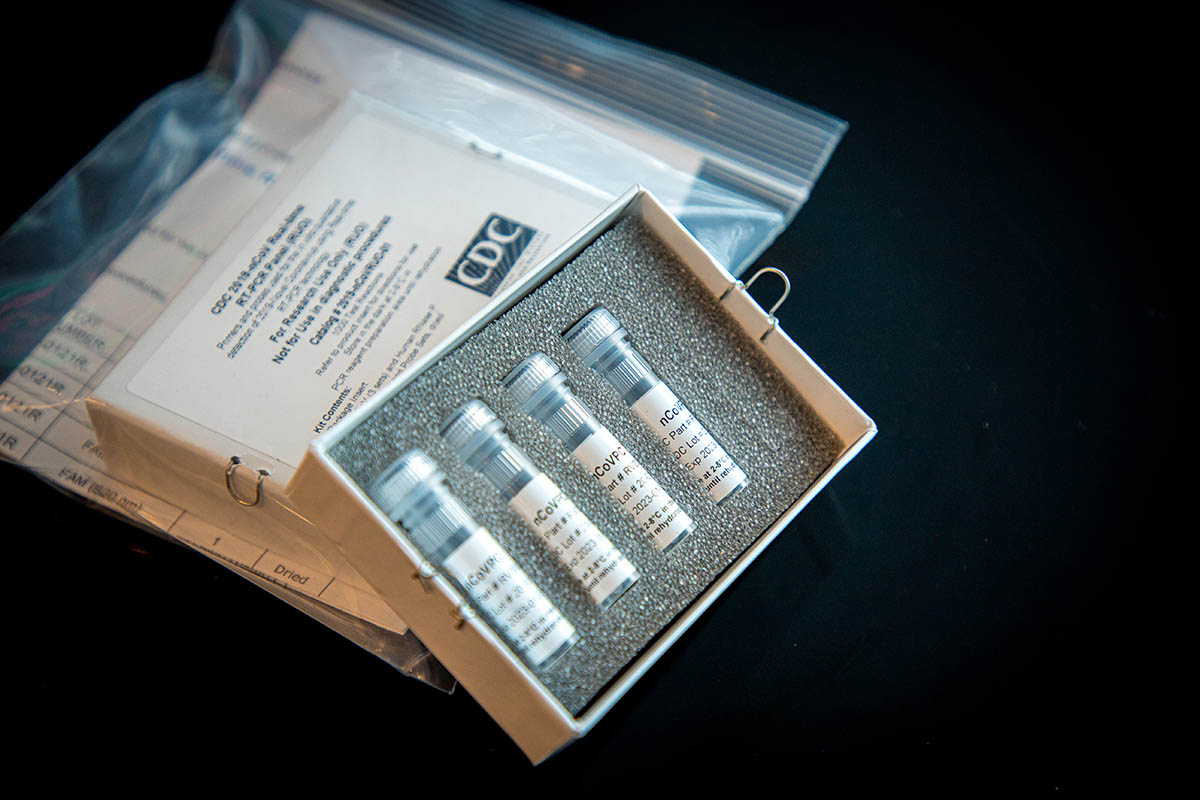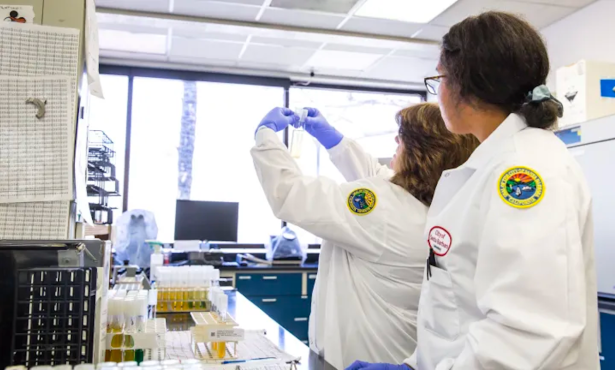Santa Barbara’s Ability to Test All Residents Still a Couple of Months Off
County Has About 550 Tests Available Daily for Frontline Medical Workers and High-Risk Patients

To the list of symptoms the Centers for Disease Control and Prevention acknowledges COVID-19 can cause has been added chills, sore throat, muscle pain, headache, and the loss of taste and smell. That’s just the latest information. We already had learned that young people get it, we should all wear facemasks, perfectly healthy people could be full of coronavirus germs, and it’s an economy destroyer.
Santa Barbarans first became vocally alarmed about coronavirus in March when the Grand Princess cruise ship was scheduled to approach our shores with 21 infected tourists aboard. Though the ship never docked here, the worry, lockdown, and economic pain began. And none of that will be going away soon. Public Health Officer Dr. Henning Ansorg, on whose shoulders rests the health of the county and who declared a local emergency the week before the governor announced his shelter-in-place order, recently told the Independent: “We will need to have social distancing, mask wearing at work and in public, no congregations of more than 6-10 people for a LONG time.”
In California, Gov. Newsom listed six criteria before he would suspend the shelter-in-place requirement, now in its sixth week. The first hurdle must be a greatly enlarged campaign to test people, and then, to track all those who have come into contact with any person who tests positive. Right now, the state is not at a stage where it could accomplish either of these requirements efficiently.
Every day Santa Barbara County and its hospitals have about 550 tests available. Frontline medical workers and high-risk patients have priority, with other tests going to commercial labs. Ansorg hopes to know this week if testing capacity could be increased, but the ability to test all symptomatic and asymptomatic county residents was still a couple of months off, he said.
In Santa Maria, Marian Medical Center can process upward of 200 PCR (polymerase chain reaction) tests a day, said Dr. Kevin Ferguson, who runs the pathology lab. Doctors can completely rely on a PCR test where a patient has tested positive. However, when patients test negative, it does not mean that the body is free of the virus, but only that is not yet detectable. Once reagents arrive for its Hologic test instrument next month, said Dr. Ferguson, up to 750 tests per day could be run.
Because Cottage Health lacks sufficient collection supplies and reagent kits, it is only able to process 50-70 PCR tests daily. It sends about the same number to an outside facility, LabCorp, which reported in March the ability to process 20,000 tests a day. The hospital hopes to have antibody testing onsite in a month or two, said spokesperson Maria Zate. Lompoc Valley Medical Center declined to comment on test availability.
Another type of testing, serology, can detect coronavirus antibodies through blood serum. Its reliability for detecting COVID-19 is in the 90th percentile, and it can show how wide spread the virus is within a community. Quest Diagnostics announced it would process a serology test for anyone who thought they’d had COVID-19. No doctor’s order is required. Quest stated that the results will be shared with federal and local health officials.
The Shutdown Wears On
“The vast majority of residents are doing what they need to do,” said Supervisor Gregg Hart, noting that about 40 percent are working from home or wearing a mask. “People are taking this seriously.” Indeed, COVID-19 cases have not overwhelmed the county’s hospitals, but the small number of cases has also reduced the number of people with antibodies.
The $64,000 question is whether the PCR or serology testing will tell us if we can stop sheltering in place. The answer is “not really.” The similar virus SARS (severe acute respiratory syndrome), which caused a pandemic in 2003, only conferred immunity for a couple of years. Doctors who’ve recovered from COVID-19 are taking no risks, said Dr. Lynn Fitzgibbons, who heads up infectious disease at Cottage Health. “They are still using all the PPE (personal protective equipment) available,” she said.
Fitzgibbons explained. “We have to be very careful,” she said. “A positive serology test might indicate a patient had the disease — that the body recognizes the virus — but we don’t yet know if it means they are protected from getting it again. And there’s always the possibility of a false positive.”
When the county begins contact tracing it will take an “army,” said Hart. People in the public defender and district attorney departments are being trained to join public health employees when the state is ready to begin tracing.
The governor’s checklist also includes having enough beds in hospitals to meet a potential second surge of COVID-19 patients, employing safe distancing for businesses and schools, and reinstating shelter-in-place if infections soar.
County meetings are ongoing to discuss the strategies employed by San Luis Obispo County. “S.L.O. County had about a two-week head start,” said Bob Nelson, who is currently Supervisor Peter Adam’s chief aide and will become the county’s 4th District supervisor in January.
“We want to make sure that the … ‘turning of the dimmer switch,’ as Governor Newsom has described [the gradual easing of the stay-at-home order] is done with great precision,” said Hart, “to ensure that we are prepared to deal with future COVID-19 complications without having to shut our economy down for a second time.”
At the Santa Barbara Independent, our staff continues to cover every aspect of the COVID-19 pandemic. Support the important work we do by making a


